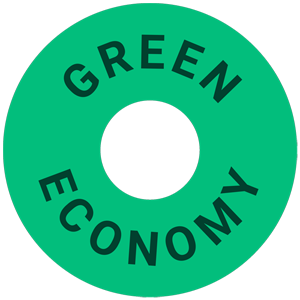Bioethanol
Bioethanol is being used as an alternative to the traditional fossil fuels rife within the transport sector. It is produced via one of two techniques:
- Fermentation – by using the sugar fermentation process obtained from cellulose rich plants like sugar cane, sugar beet, and various grains. Forestry residue and agricultural waste can also be used.
- Chemical – by reacting ethylene with steam.
How is it made?
Presently, the most common type of bioethanol is taken from plants which are produced specifically for its production, known as “first generation bioethanol”. However, “advanced” bioethanol” is in its research and development phase and allows bioethanol to be derived from plant species not intended for food, such as wood and algae.
The most common blends of bioethanol are E5, containing up to 5 per cent bioethanol in unleaded petrol, E10, which has up to 10 per cent bioethanol and is approved for use in most conventional petrol-powered vehicles, and E15, containing up to 15 per cent bioethanol.
In order for vehicles to be able to run on higher levels of bioethanol, such as E85, the engine will need to be designed to run on alternative fuels with a far higher ethanol content than petrol. However, most of the petrol available today contains some bioethanol and you won’t need to modify your vehicles engine up to E10.
Benefits of bioethanol:
The most glaring benefit of bioethanol is its renewable nature, making it a regenerative fuel. It also has a significantly smaller carbon footprint than petrol, with the difference in CO2 emissions generated compared to fossil fuels ranging from 19 per cent fo 86 per cent dependent on the crop. Bioethanol does produce CO2 when burned, but this comes from the CO2 absorbed by the plant during photosynthesis.
As the UK transitions to a net zero economy, it will need to reduce its reliance on oil and gas and increase renewable energy capacity. Bioethanol supports this transition and can be blended with petrol to slowly reduce oil demand and maintain diminishing supplies. Finally, bioethanol is reliant on crops which can be cultivated in rural economies, supporting domestic agriculture rather than relying on oil imports from giant, multi-national corporations.
Biodiesel
Biodiesel is a cleaner-burning alternative to petroleum-based diesel, derived from vegetable oils and animal fats. Often referred to as B100 in its purest form or neat biodiesel in its unblended form, it can be used to fuel compression-ignition vehicle engines. In terms of supporting UK biodiesel, rapeseed presents the greatest opportunity for its production.
How is biodiesel made?
Over 80 per cent of biodiesel is made from vegetable oil, particularly derived from soybeans, rapeseed and canola, and in some cases using recycled restaurant grease and oil. Animal fats are used to produce some biodiesels, making it a non-vegan fuel source which may be a dealbreaker for some individuals.
Similarly to bioethanol, biodiesel can be mixed with traditional diesel to make a blended biofuel, with varieties ranging from B5 up to B100. The majority of diesel available at petrol stations already contains upwards of 5 per cent biodiesel. In Northern Ireland, all standard diesel pumps now contain 10 per cent biodiesel.
Biodiesel produces less carbon emissions than traditional diesel and the crops used in its production absorb CO2 as they grow. Presently, a key barrier to biodiesel production is the cost of treating raw oil. Waste vegetable oils can be sourced and treated at a lower cost, but biodiesel production on an industrial scale is currently too expensive to compete with fossil fuel diesel.
Biogas
Biogas is a renewable energy source made from biodegradable materials like maize crops and waste. Biogas can be compressed and used to fuel vehicles, or used as a replacement for natural gas.
How is biogas made?
Organic matter, such as food, crops, and animal waste, is broken down by microorganisms in the absence of oxygen in a process known as anaerobic digestion. The organic and waste materials need to be in an enclosed environment for this process to take effect. The process occurs naturally, or can be implemented into an industrial process and produced intentionally.
If biogas is cleaned and treated to natural gas standards, it becomes biomethane which is used in similar processes to methane, such as heating and cooking.
Benefits of biogas
Capturing the gases produced by naturally decaying matter, primarily methane and carbon dioxide, causes less environmental degradation than allowing these gasses to escape into the atmosphere. Biogas is a sustainable solution to managing agricultural waste and reaping the benefits of this product.
The biogas process is largely cyclical, making it a sustainable process for managing agricultural waste. An example of this is using animal waste on a farm to create biogas which then fuels the machinery on the farm.














